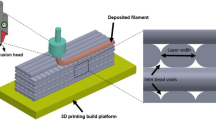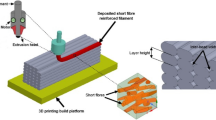The results of experimental studies on the optimal method of testing materials for hardness depending on physical and mechanical properties are presented. The possibility of evaluating the structural parameters, i.e., the homogeneity coefficients and the variation of the reliability of various devices for obtaining the hardness values of rolled metal products, is considered. The results obtained experimentally have shown the effectiveness of such evaluations. The reliability of the methods for testing the hardness of materials of different plasticities was controlled by determining the degree of dispersion of the obtained results by the LM-hardness method. The influence of the material’s physical and mechanical characteristics on the hardness test’s accuracy is analyzed. The possibility of choosing the most reliable Brinell, Vickers, or Rockwell method for determining hardness characteristics depending on the level of plastic properties of the sheet material was determined. Following Fisher’s theory of small samples in terms of the general population, a statistical assessment of the reliability of measurement methods was performed on a sample of a limited size, which makes it possible to assess the reliability of the results of hardness determination by various methods and determine the optimal variant of testing materials, including high-strength ones, for hardness. According to the methodology for analyzing variance to select the optimal variant for conducting studies of material hardness, the statistical assessment of the reliability of hardness measurements was carried out using a random sample from the general population in its central part in the number of five measurements following each other. The variance check is applied using the Cochrane criterion to determine the uncertain members of the variation series. Based on the research results, the predominant expediency of one or another Brinell, Vickers, or Rockwell method of conducting hardness tests depending on the level of plasticity of materials, especially high-strength ones, given their structural state as assessed by the parameters of hardness characteristics scattering – homogeneity coefficients m and variation v. The availability of this information will make it possible to determine the mechanical characteristics of materials by hardness values more reliably.
Similar content being viewed by others
References
DSTU ISO 6506-1:2019. Metal Materials. Determination of Brinell Hardness. Part 1: Test Method (ISO 6506-1:2005, IDT) [in Ukrainian], Valid since October 30, 2019.
DSTU ISO 6507-1:2007. Metal Materials. Determination of Vickers Hardness. Part 1: Test Method (ISO 6507-1:2005, IDT) [in Ukrainian], Valid since February 1, 2018.
GOST 6508-1:2013. Metal Materials. Determination of Rockwell Hardness. Part 1: Test Method (Scales A, B, C, D, E, F, G, H, K, N, T) (ISO 6508-1:2005, IDT) [in Ukrainian], Valid since September 1, 2021.
GOST R 8.904-2015 (ISO 14577-2:2015). Measurement of Hardness and Other Characteristics of Materials in Industrial Indentation. Part 2: Verification and Calibration of Hardness Testers [in Russian].
V. Matyunin, Operational Diagnostics of Mechanical Properties of Structural Materials [in Russian], MPEI Publishing House, Moscow (2006).
N. V. Smirnov and I. V. Dunin-Barkovskii, A Course in Probability Theory and Mathematical Statistics (for Technical Applications) [in Russian], Nauka, Moscow (1969).
M. N. Stepnov, Statistical Processing of Mechanical Test Results [in Russian], Mashinostroenie, Moscow (1972).
DSTU 7793: 2015. Metal Materials. Determination of the Level of Scattered Damage by the LM-Hardness Method. Test Method [in Ukrainian], Valid since April 1, 2016.
E. Gumbel, Statistics of Extreme Values [in Russian], Mir, Moscow (1965).
COMPUTEST SC. ERNST HAERTEPRUEEER SA. Via Cantonale – P.O. Box 193. 6814 LAMONE (Ti) – Switzerland.
V. V. Kharchenko, N. P. Rudnitsky, O. A. Katok, et al., “Installation for determining the mechanical characteristics of structural materials by instrumented indentation,” in Reliability and Durability of Machines and Structures [in Russian], Issue 28, Kyiv (2007), pp. 140–147.
O. A. Katok, M. R. Muzyka, V. P. Shvets’, et al., “Determination of hardness of high-strength steels by the Brinell method. Part 1. Improvement of measurement accuracy,” Strength Mater, 53, No. 6, 902–908 (2021). https://doi.org/10.1007/s11223-022-00358-7
K. Daniel, Application of Statistics in Industrial Experimentation [in Russian], Mir, Moscow (1979).
E. G. Aslanian, “Metrological support for hardness measurements,” Izmerit. Tekhn., No. 1, 45–50 (2005).
DSTU 4046-2001. Technological Equipment of Oil Refineries, Petrochemical and Chemical Industries. Technical Diagnostics. General Technical Requirements [in Ukrainian], Valid since July 1, 2002.
A. A. Komarovskii, “Physical nature of hardness,” Kontrol. Diagnostika, No. 1, 41–43 (2003).
A. O. Lebedev and M. R. Muzyka, “Technical diagnostics of the material state by the LM-hardness method,” in: Problems of Service Life and Safety of Operation of Structures, Facilities, and Machines [in Ukrainian], Paton Institute of Electric Welding of the National Academy of Sciences of Ukraine, Kyiv (2006), pp. 97–101.
V. V. Nalimov, Theory of Experiment [in Russian], Nauka, Moscow (1971).
B. Yu. Lemeshko, S. B. Lemeshko, and A. A. Gorbunova, “On the application and power of the criteria for checking the homogeneity of variances. Part I. Parametric criteria,” Izmerit. Tekhn., No. 3, 10–16 (2010).
Author information
Authors and Affiliations
Corresponding author
Additional information
Translated from Problemy Mitsnosti, No. 6, p. 99 – 110, November – December, 2023.
Rights and permissions
Springer Nature or its licensor (e.g. a society or other partner) holds exclusive rights to this article under a publishing agreement with the author(s) or other rightsholder(s); author self-archiving of the accepted manuscript version of this article is solely governed by the terms of such publishing agreement and applicable law.
About this article
Cite this article
Muzyka, M.R. Experimental Determination of the Optimal Hardness Testing Method Depending on the Material’s Physical and Mechanical Properties. Strength Mater (2024). https://doi.org/10.1007/s11223-024-00608-w
Received:
Published:
DOI: https://doi.org/10.1007/s11223-024-00608-w




